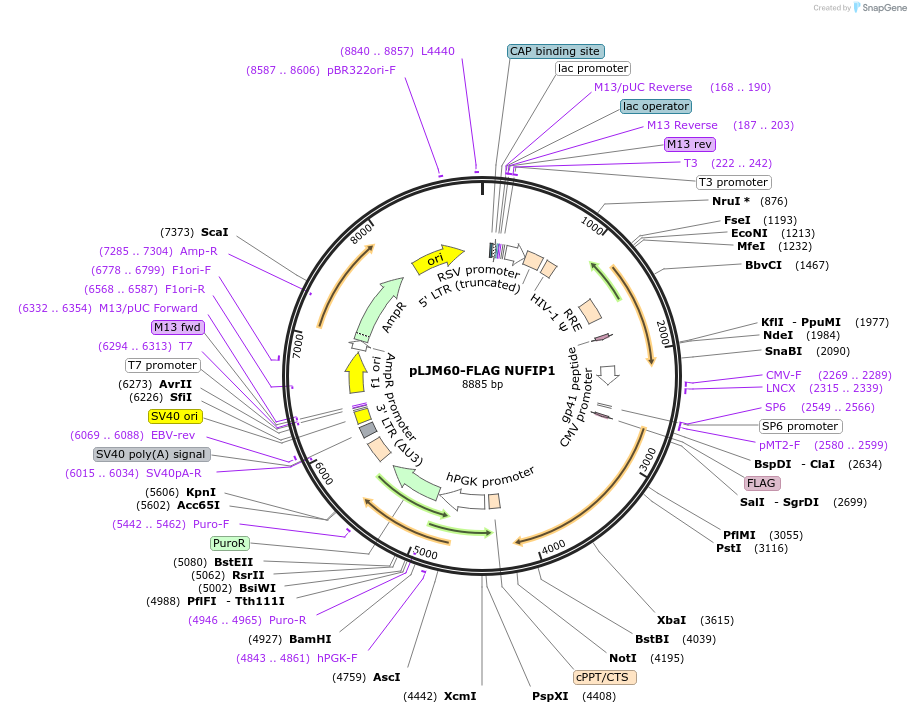pLJM60-FLAG NUFIP1
(Plasmid
#110950)
-
Purposeexpresses mammalian FLAG-NUFIP1
-
Depositing Lab
-
Sequence Information
Ordering
| Item | Catalog # | Description | Quantity | Price (USD) | |
|---|---|---|---|---|---|
| Plasmid | 110950 | Standard format: Plasmid sent in bacteria as agar stab | 1 | $85 | |
Backbone
-
Vector backbonepLJM60
- Backbone size w/o insert (bp) 11000
- Total vector size (bp) 12000
-
Vector typeMammalian Expression, Lentiviral
-
Selectable markersPuromycin
Growth in Bacteria
-
Bacterial Resistance(s)Ampicillin, 100 μg/mL
-
Growth Temperature37°C
-
Growth Strain(s)XL10 Gold
-
Copy numberHigh Copy
Gene/Insert
-
Gene/Insert nameNUFIP1
-
SpeciesH. sapiens (human)
-
Insert Size (bp)1500
-
GenBank IDNM_012345.2
-
Entrez GeneNUFIP1 (a.k.a. NUFIP, Rsa1, bA540M5.1)
- Promoter CMV
-
Tag
/ Fusion Protein
- FLAG (N terminal on backbone)
Cloning Information
- Cloning method Restriction Enzyme
- 5′ cloning site SalI (unknown if destroyed)
- 3′ cloning site NotI (unknown if destroyed)
- 5′ sequencing primer CGCAAATGGGCGGTAGGCGTG (Common Sequencing Primers)
Terms and Licenses
-
Academic/Nonprofit Terms
-
Industry Terms
- Not Available to Industry
Trademarks:
- Zeocin® is an InvivoGen trademark.
These plasmids were created by your colleagues. Please acknowledge the Principal Investigator, cite the article in which the plasmids were described, and include Addgene in the Materials and Methods of your future publications.
-
For your Materials & Methods section:
pLJM60-FLAG NUFIP1 was a gift from David Sabatini (Addgene plasmid # 110950 ; http://n2t.net/addgene:110950 ; RRID:Addgene_110950) -
For your References section:
NUFIP1 is a ribosome receptor for starvation-induced ribophagy. Wyant GA, Abu-Remaileh M, Frenkel EM, Laqtom NN, Dharamdasani V, Lewis CA, Chan SH, Heinze I, Ori A, Sabatini DM. Science. 2018 May 18;360(6390):751-758. doi: 10.1126/science.aar2663. Epub 2018 Apr 26. 10.1126/science.aar2663 PubMed 29700228

